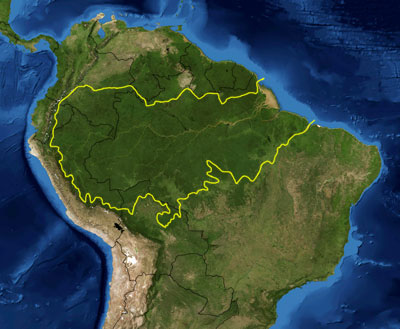
The world’s forests are a leading indicator of the planet’s health. They absorb some of the carbon that we emit and protect us from the growing damage of climate change. And they create microclimates around them—cooling their nearby regions and making the local climate more stable. Source: The Daily Beast
Scientists who want to understand how healthy the world at large is look to regional forests and, increasingly, they’re looking at the health of these ecosystems globally.
One of the ways they do so is through the Forest Global Earth Observatory, a network of 66 research sites in 27 countries around the world.
These plots, which vary in size from 50 to more than 100 acres, are connected by the scientists who study them and share their data collaboratively. That allows the program to monitor 6 million trees and more than 10,000 species all at once and gives a picture of the global health of the world’s trees.
“This is a grassroots network. It started out as a coalition of forest geologists interested in similar questions—and wanting to standardize their questions,” said Kristina Anderson-Teixeira, who heads up the Forest GEO’s Ecosystems & Climate Research Initiative.
“These are large plots. You always need a researcher who’s competent to do it and is going to be there long term and committed. We look for someone who’s going to be engaging with the science and going to make a good scientific partner.”
The scientists who monitor each plot conduct their own research based on a variety of interests.
The broad program goals include:
- Looking at monitoring arthropods and how they fit into the forest food web; doing a census of how much carbon the forests are holding and how that is fluctuating;
- studying the DNA of the different tree species;
- understanding how forests contribute to mitigating climate change; monitoring flowers, seeds, and seedlings;
- looking at the forests’ soils and how their carbon is responding to climate change; and
- actively surveying the vertebrates (such as mammals but also birds, bats, and amphibians) that live in the forests using camera traps and acoustic monitoring.
But above all, ecologists in the Forest GEO network are closely watching the trees. And that means doing what all forest ecologists do: walking the plot and physically interacting with each and every tree.
Each tree larger than 1 centimeter in diameter (about the size of your finger) within their plot will be mapped out in a grid. The scientists will note their species and their overall health, measure their size and what their carbon mass and storage is, and give each one a permanent tag.
They will revisit each tree about every five years, and note and track the way they have changed over that period of time.
“Some scientists make a whole bunch of supplementary measurements and others fewer,” Anderson-Teixeira said.
“… leaf size and thickness. We look at nutrient content; the nitrogen content correlates with its photosynthetic rate. You can measure things like how dry do they look and at what level of dryness do they start wilting. The size is shaped by climate. The vein densities are related to climate and their drought tolerance. Or you can sample the wood and look at the rings and look at the history of growth, the size of the vessels that carry water and how susceptible the tree is going to be do drought.”
Each site is different. In Mpala, Kenya, for example, scientists are monitoring a 150-hectare plot (about 370 acres). Their forest is in a savanna ecosystem and is dominated by Acacia trees. The plot also sees elephants, buffalo, giraffes, and hyenas, among other animals.
At this location scientists are closely watching how the impacts of land use and climate change are affecting the forest.
On the other side of the world, the site in Walang, Papua New Guinea, is a 50-hectare (about 123 acres) rainforest plot. It’s the first location ever to study carbon dynamics in Papua New Guinea, which is part of an island that has the world’s third largest tropical forest.
All told, the sites represent every type of forest that exists in the world. It allows the researchers to do what other forest ecologists can’t necessarily do: compare. They are starting to see patterns in how trees are adapting to the world’s new climate, which species are surviving the rise in forest fires, how melting permafrost is changing forest systems, and how invasive plants and animals are changing ecosystems.
It’s a one-of-a-kind program and one that, now more than ever, is essential as we attempt to adapt to our changing planet.







